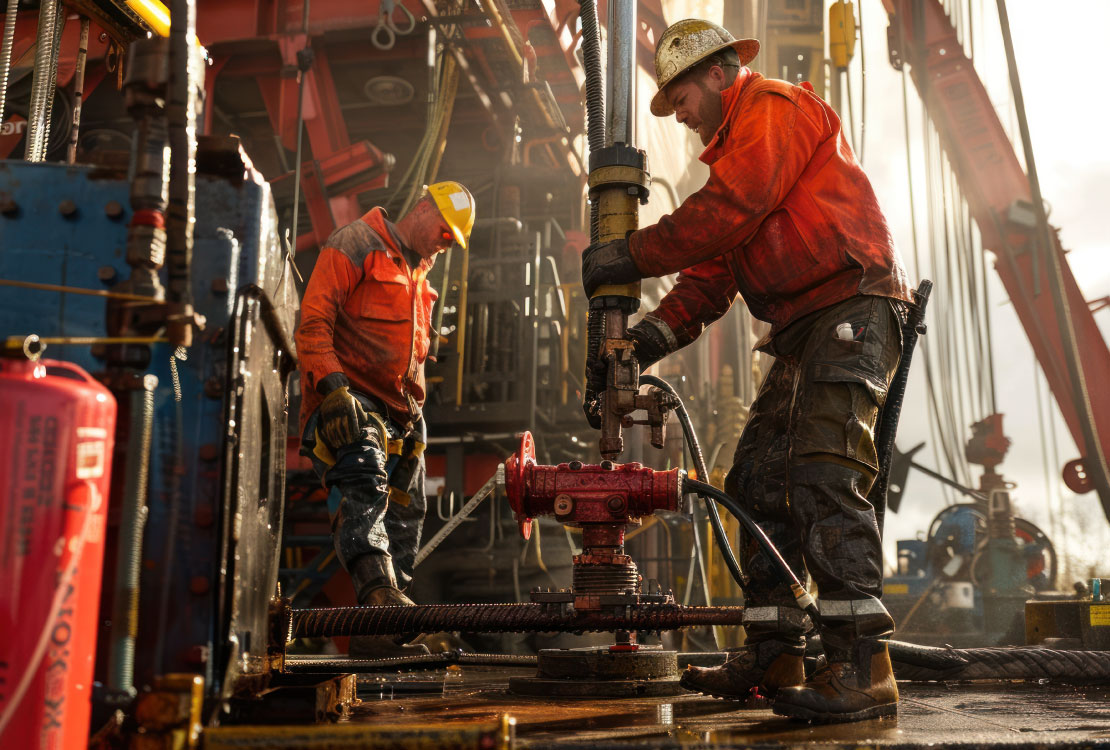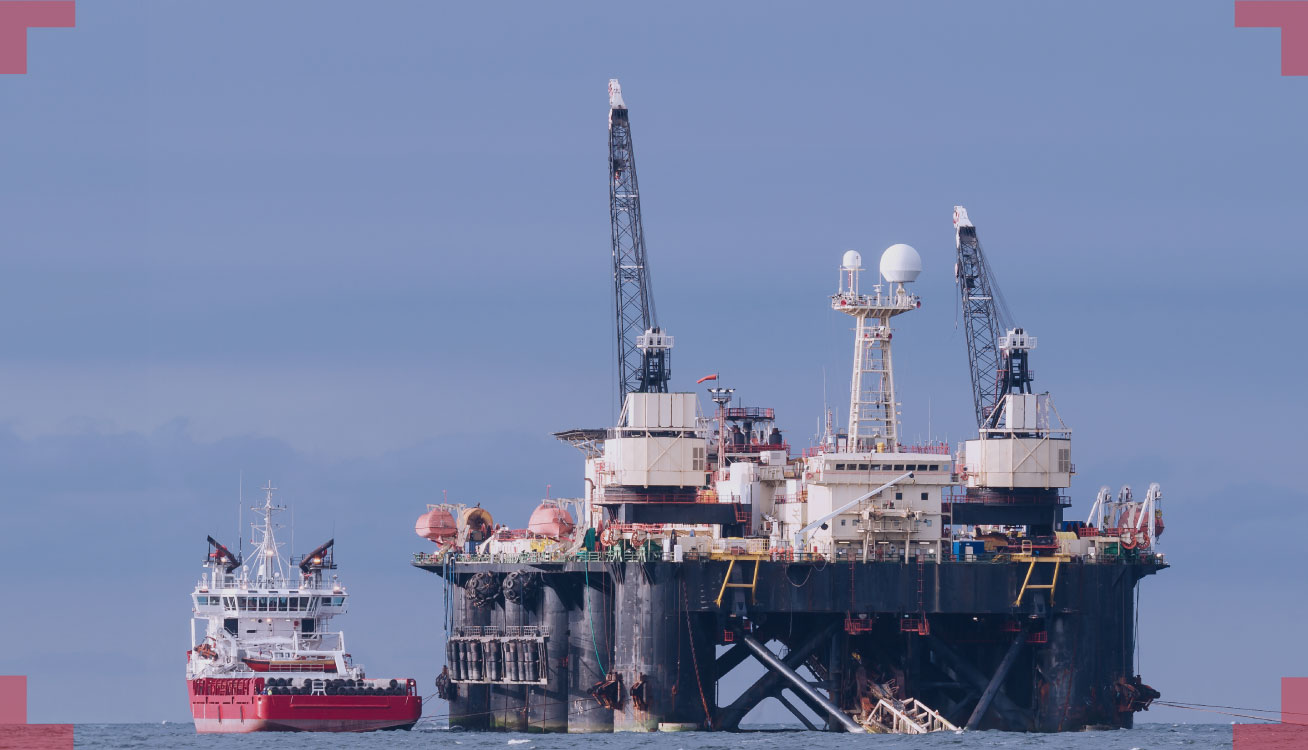Oil Rig Safety with Computer Vision for Real-Time Monitoring and Maintenance
- Vathslya Yedidi
- October 23, 2024
Oil rig safety is a major concern in the oil and gas industry, where advanced engineering intersects with high-risk operations. These facilities are designed for hydrocarbon extraction and rely on skilled oil rig workers to operate specialized equipment, including drilling apparatus, pipeline networks, pumping systems, and advanced control mechanisms. The operational environment for working on oil rigs is inherently hazardous, especially in offshore installations where corrosive marine conditions, volatile materials, and severe weather increase oil rig risks.
Maintaining operational integrity on oil rigs requires vigilant rig monitoring and timely maintenance. System failures or compromised safety conditions can lead to disastrous incidents, environmental damage, and costly downtime. Historically, oil well workers have relied on manual inspections and monitoring, which are time-consuming and expose workers to additional risks. Oil rig safety with Computer Vision offers a transformative approach to both monitoring and maintenance, significantly enhancing safety and operational efficiency.
In this blog, we explore how Computer Vision in oil and gas improves oil rig safety, from real-time equipment monitoring to predictive maintenance solutions and hazard detection using Vision AI, and how these technologies are transforming performance in these high-risk environments.
How Oil Rigs Work?
Understanding what oil rigging is, begins with recognizing the intricate engineering behind these facilities. An oil rig is a sophisticated structure designed for extracting oil and gas from beneath the earth’s surface. The heart of every oil rig is a precision-engineered drilling system, with the derrick structure serving as the central support for the drilling assembly. This rotary drilling system bores deep into the earth to access underground reserves of hydrocarbons.

One of the most critical processes in oil rig work is mud circulation, where specially formulated drilling fluids cool the drill bit and transport formation cuttings to the surface. This fluid system is integral to the rig’s safe and efficient operation. In addition to drilling systems, oil rigs feature a range of interconnected equipment, such as power generation units, pumps, and pipeline networks, that help maintain flow and pressure throughout the operation.
Oil rig workers must manage these complex systems while ensuring that oil rig safety protocols are followed to minimize the risks of equipment failure, leaks, or blowouts. The safety of workers and equipment depends on continuous oil rig monitoring and the implementation of advanced safety measures, such as Computer Vision.
How Computer Vision Improves Oil Rig Monitoring?

The complexity of oil rig operations requires constant surveillance to maintain efficiency and safety. Traditional methods of rig monitoring often involve manual inspections, where workers must continuously monitor machinery and working conditions. These methods are not only time-consuming but also prone to human error. Computer Vision solves these challenges by integrating Vision AI-enhanced imaging systems and sensor networks, providing real-time, automated monitoring of equipment, personnel, and the surrounding environment.
Real-Time Equipment Monitoring
Vision AI-powered cameras strategically placed across the rig provide continuous surveillance of vital equipment such as drills, pumps, and pipelines. These systems detect early signs of malfunction or wear, such as irregular vibrations, pressure changes, or temperature spikes. This enables operators to take preventive measures before minor issues escalate into major equipment failures. With thermal imaging and motion tracking capabilities, Computer Vision significantly improves oil rig equipment safety by providing early detection of operational anomalies.
Worker Safety Monitoring
Ensuring the safety of oil rig workers is a top priority in such high-risk environments. The constant presence of hazardous materials, high-pressure systems, and moving machinery requires strict adherence to safety protocols. Computer Vision enhances safety by actively monitoring worker behavior, automatically verifying the use of Personal Protective Equipment (PPE), and identifying breaches of safety protocols. Cameras can detect when workers enter restricted or dangerous areas and can immediately alert the safety team to intervene. This system helps enforce safety regulations and prevent accidents, reinforcing oil rig safety standards in real–time.
Hazard Detection Systems
Environmental hazards, such as gas leaks, fire risks, or structural compromises, pose significant oil rig risks that require immediate attention. Drones with Computer Vision offer comprehensive surveillance capabilities, particularly in hard-to-reach areas. Drones equipped with Vision AI-driven cameras inspect underwater structures, derricks, and other areas that are challenging for human inspectors. These systems detect hazards in real–time, allowing for rapid response and preventing small issues from developing into more serious incidents. This proactive hazard detection approach significantly improves security for oil rigs, ensuring operations remain safe and efficient.
How Computer Vision Enhances Oil Rig Maintenance?

While monitoring is crucial, maintaining the operational integrity of oil rigs is equally important to ensure uninterrupted production. Traditional maintenance methods rely on fixed schedules, which can either lead to unnecessary downtime or missed opportunities to address emerging issues. Computer Vision for oil rigs introduces predictive maintenance, allowing for dynamic, condition-based service that maximizes equipment lifespan and minimizes operational disruptions.
Predictive Maintenance
With Computer Vision, AI-driven sensors and imaging systems continuously monitor the condition of equipment, detecting subtle signs of wear, such as increased vibration, pressure fluctuations, or thermal anomalies. These systems enable predictive maintenance, where repairs are conducted based on real-time data rather than fixed schedules. This approach prevents unexpected equipment failures and reduces downtime by ensuring maintenance occurs only when necessary, improving operational efficiency.
Structural Integrity Monitoring
Oil rig working environments, particularly offshore, face constant threats from harsh environmental conditions, including corrosive saltwater, high winds, and extreme weather. These factors can weaken the structural integrity of the rig over time. Computer Vision systems provide high-resolution imaging of critical structural elements, such as support beams and underwater foundations. These images are analyzed by Vision AI algorithms to detect early signs of corrosion, cracks, or other structural weaknesses. Early detection enables proactive interventions, reducing the risk of catastrophic failures and ensuring the long-term stability of the rig.
Automated Maintenance Scheduling
In addition to predictive capabilities, Computer Vision can automate the maintenance process by analyzing real-time performance data. When equipment shows signs of wear or malfunction, the system triggers maintenance alerts, ensuring that servicing occurs at the optimal time. This automated scheduling prevents unnecessary repairs and keeps equipment running efficiently, enhancing oil rig safety and minimizing downtime.
Conclusion
Integrating Computer Vision for oil and gas operations in oil rigs has brought significant advancements in safety and efficiency. This technology is transforming how oil rigs are managed and maintained by offering real-time monitoring, proactive hazard detection, and predictive maintenance. With Computer Vision, downtime is reduced, operational risks are minimized, and the lifespan of critical equipment is extended. As the oil and gas industry evolves, Computer Vision will continue to play an essential role in ensuring that oil rigs remain safe, efficient, and productive.
Contact us to discover how Computer Vision solutions can enhance your oil rig safety and optimize your operational performance.

